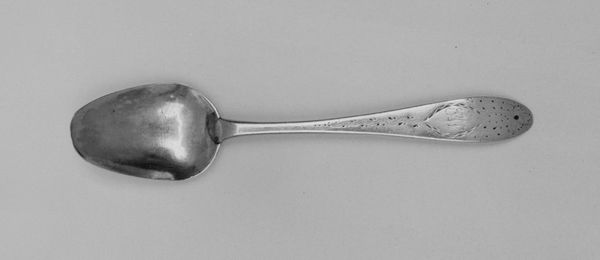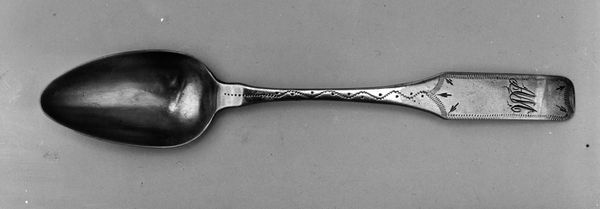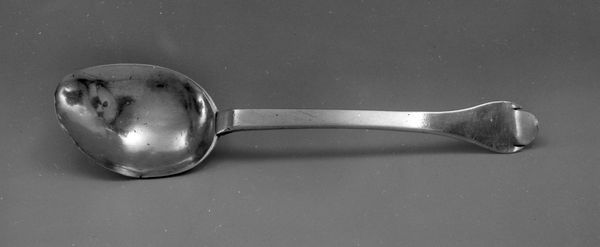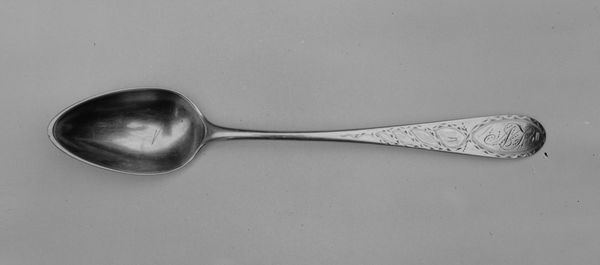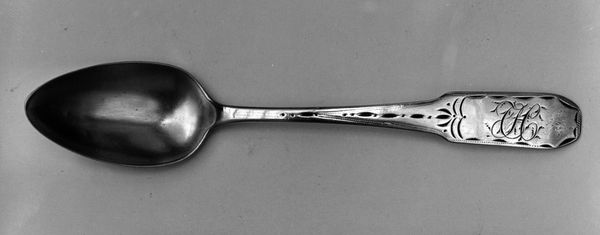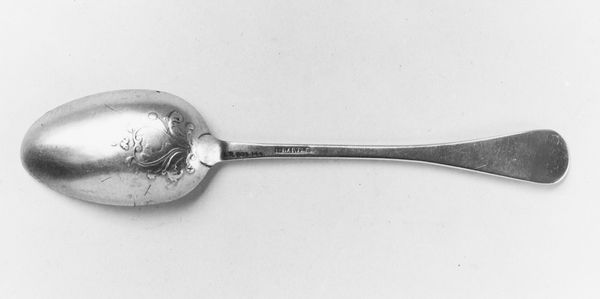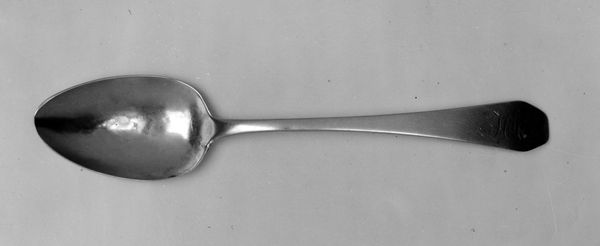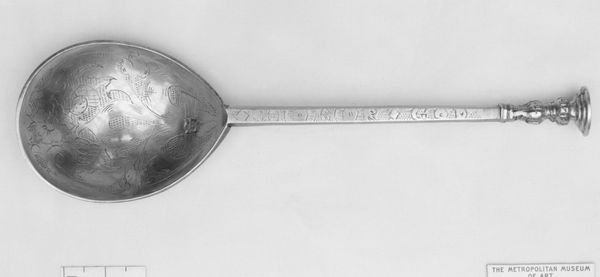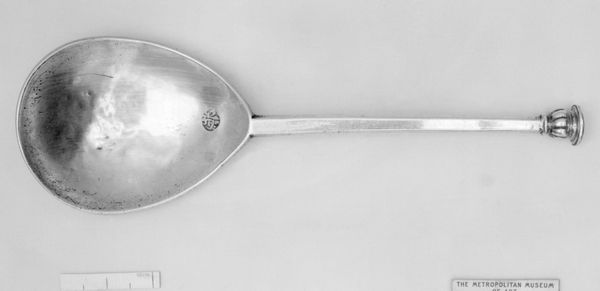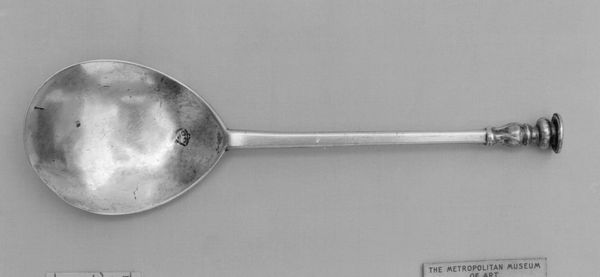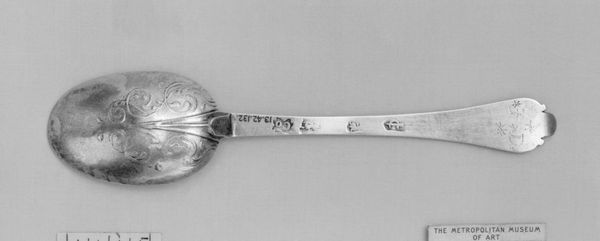
silver, sculpture
#
silver
#
sculpture
Dimensions: L. 7 7/8 in. (20 cm)
Copyright: Public Domain
Curator: Let’s take a look at this silver spoon. It was crafted by Edward Webb, sometime between 1685 and 1718. The delicate piece resides at the Metropolitan Museum of Art. Editor: It's smaller than I expected, isn’t it? But there is something very solid about its appearance. I keep imagining the hands that polished it, used it daily at mealtimes, you know? It looks surprisingly humble. Curator: "Humble," yes, but consider the labor and materials that go into such a "simple" object. The silver itself, sourced and smelted, transformed by skilled artisans...this spoon speaks to an entire system of production. And this dates from when silver was not as easily obtained or used in everyday production. Editor: I see what you mean. It feels like something from a Vermeer painting – those quiet, meticulously crafted moments of domestic life. Who owned this, I wonder? Were they happy? Curator: An interesting line of inquiry! The engraved monogram on the handle offers us a clue. Perhaps we can track the lineage, piece together a social history through the spoon's existence and eventual trajectory into a museum collection. It highlights a consumer culture being developed in society at the time. Editor: Suddenly, this little spoon feels weighty with unspoken stories. It whispers of births, deaths, love affairs and social climbing. Almost as if a small silver portal opens to another world. A lot more than something to hold pea soup with. Curator: Indeed. The interplay of function and decoration reveals much about the priorities of its time and about consumer culture. The choice of material and attention to details speak volumes. Editor: I’ll never look at cutlery the same way again. A utilitarian object transformed into a vehicle for connection with the past.
Comments
No comments
Be the first to comment and join the conversation on the ultimate creative platform.
